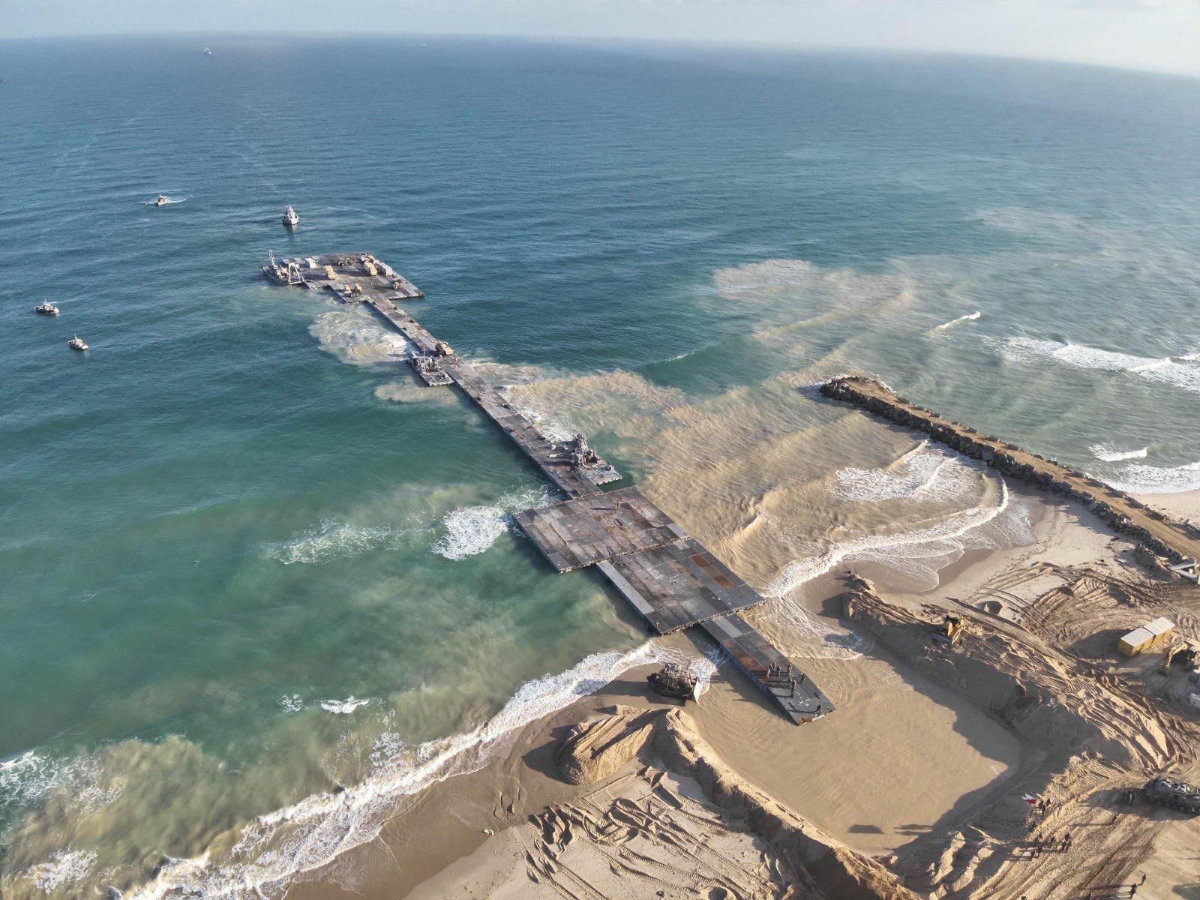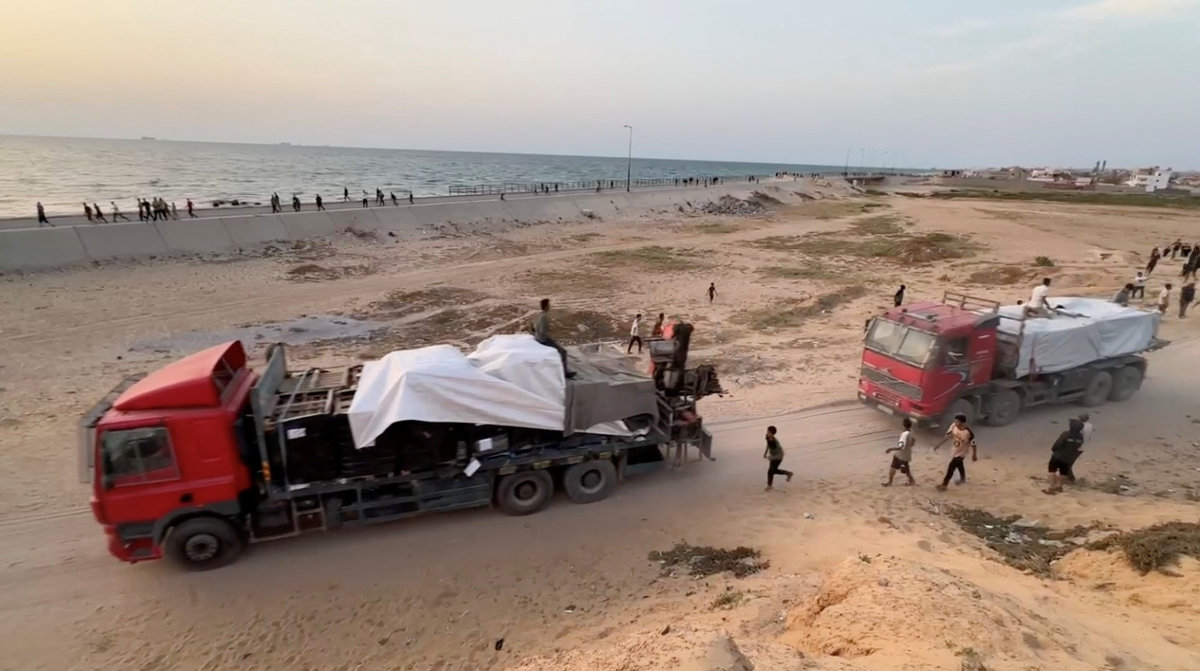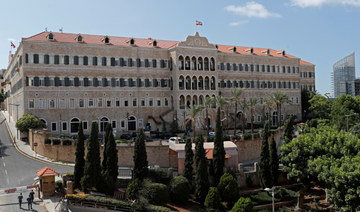BEIRUT: The Ministry of Education decided on Tuesday to suspend afternoon classes attended by Syrian refugee students in Lebanon’s public schools, after teachers had earlier ended morning sessions allocated to Lebanese students in such establishments.
Albert Chamoun, an adviser at the ministry, told Arab News that the decision was taken “because the administrative and educational authority cannot suspend morning classes attended by Lebanese students, while maintaining the afternoon shifts allocated to Syrian refugee students.”
He added: “Donor countries are not going to pay teachers’ wages.
“The ministry had secured some incentives in dollars last year for the teachers through previous accounts, but failed to secure these incentives this year.
“Teachers rejected a proposal by the minister of education to receive $5 for every working day, which would amount to $70 per month, but they insist on receiving $100. This is why the situation is a mess now.”
The decision to end teaching for Syrian students was announced by Imad Achkar, director general of education, who said “it was taken in accordance with the principle of equality.”
He added: “We receive everyone and our hearts are open to everybody, but it’s unacceptable for non-Lebanese children to receive an education, while our Lebanese children are deprived of it.
“Therefore, we announce the suspension of afternoon classes for non-Lebanese, pending a solution for the morning classes issue.”
Administrators and teachers of Syrian students receive their salaries in dollars from donors, according to prior agreements.
Teachers at public schools held protests throughout Lebanon on Monday. Hundreds of teachers sat out classes after they arrived at school and signed the attendance register.
They held sit-ins in school playgrounds, despite being pressured by political parties, including Hezbollah, to work.
Teachers have also ignored the will of their unions and decided to take to the streets to protest at their conditions.
High school teacher Ali Al-Dehni said: “We’ve been suffering for three years because of false promises and scarce incentives.
“Teaching has been an uphill battle and we are paying from our own money for fuel so we can drive to schools and carry out our educational duty.”
Meanwhile, Caretaker Health Minister Firass Abiad has announced that “subsidies have been completely lifted off baby formula for lack of a plan capable of controlling smuggling and selling in the market.”
Abiad said that “the subsidized quantity was enough for two countries and we were probably purchasing a quantity that suffices two countries,” in a clear reference to the issue of smuggling of the formula into Syria.
Infant and baby formula was the only type of milk still subsidized.
Joe Salloum, president of the pharmacists union, said that over the past week the milk had been missing in pharmacies and was available on the black market.
Separately, dozens of relatives of victims of the Beirut port explosion gathered in front of the Justice Palace to protest at the stalled investigation into the case.
The probe into the crime, which took place over two years ago, has been suspended for nearly 12 months as a result of complaints filed against investigating judge Tarek Bitar.
Scuffles took place between protesters and security forces deployed to protect the Justice Palace, resulting in some injuries.
The protest coincided with the arrival of European investigators in Beirut to question Riad Salameh, Lebanon’s central bank governor, and a meeting of the Supreme Judicial Council to request the appointment of judges of the Court of Cassation.
William Noun, a spokesperson for the families affected by the port explosion, said: “We’ve had enough of empty words while waiting for a solution to our case. Peaceful protests are no longer useful.”
Teaching suspended for Syrian refugee children in Lebanon’s public schools
https://arab.news/26pgm
Teaching suspended for Syrian refugee children in Lebanon’s public schools

- The decision to end teaching for Syrian students was announced by Imad Achkar, director general of education
- Administrators and teachers of Syrian students receive their salaries in dollars from donors, according to prior agreements
Fierce fighting in northern Gaza as aid starts to roll off US-built pier

- Residents said Israeli bulldozers were demolishing homes and shops in Jabalia in the path of the advance
- In the south, Palestinian militants put up a fierce resistance, attacking tanks massing around Rafah
- Hamas says US floating aid pier is no substitute for end of Israeli siege of Gaza
CAIRO: Israeli forces battled Hamas fighters in the narrow alleyways of Jabalia in northern Gaza on Friday in some of the fiercest engagements since they returned to the area a week ago, while in the south militants attacked tanks massing around Rafah.
Residents said Israeli armor had thrust as far as the market at the heart of Jabalia, the largest of Gaza’s eight historic refugee camps, and that bulldozers were demolishing homes and shops in the path of the advance.
“Tanks and planes are wiping out residential districts and markets, shops, restaurants, everything. It is all happening before the one-eyed world,” Ayman Rajab, a resident of western Jabalia, said via a chat app.
Israel had said its forces cleared Jabalia months earlier in the Gaza war, triggered by the deadly Hamas-led attacks on southern Israel on Oct. 7, but said last week it was returning to prevent Islamist militants re-grouping there.
In southern Gaza bordering Egypt, thick smoke rose over Rafah, where an escalating Israeli assault has sent hundreds of thousands of people fleeing from what was one of the few remaining places of refuge.
“People are terrified and they’re trying to get away,” Jens Laerke, UN humanitarian office spokesperson, said in Geneva, adding that most were following orders to move north toward the coast but that there were no safe routes or destinations.
As the fighting raged, the US military said trucks started moving aid ashore from a temporary pier, the first to reach the besieged enclave by sea in weeks.
The World Food Programme, which expects food, water, shelter and medical supplies to arrive through the floating dock, said the aid was transported to its warehouses in Deir Al Balah in central Gaza and told partners it was ready for distribution.

The United Nations earlier reiterated that truck convoys by land — disrupted this month by the assault on Rafah — were still the most efficient way of getting aid in.
“To stave off the horrors of famine, we must use the fastest and most obvious route to reach the people of Gaza – and for that, we need access by land now,” deputy UN spokesperson Farhan Haq said.
US aid was arriving in Cyprus for delivery to Gaza via the new pier, Washington said.
Hamas demanded an end to Israel’s siege and accused Washington of complicity with an Israeli policy of “starvation and blockade.”
The White House said US national security adviser Jake Sullivan would visit Israel on Sunday and stress the need for a targeted offensive against Hamas militants rather than a full-scale assault on Rafah.
A group of US medical workers left the Gaza Strip after getting stuck at the hospital where they were providing care, the White House said.

Humanitarian fears
The Israel Defense Forces said troops killed more than 60 militants in Jabalia in recent days and located a weapons warehouse in a “divisional-level offensive.”
A divisional operation would typically involve several brigades of thousands of troops each, making it one of the biggest of the war.
“The 7th Brigade’s fire control center directed dozens of airstrikes, eliminated terrorists and destroyed terrorist infrastructure,” the IDF said.
At least 35,303 Palestinians have now been killed, according to figures from the enclave’s health ministry, while aid agencies have warned repeatedly of widespread hunger and dire shortages of fuel and medical supplies.
Israel says it must capture Rafah to destroy Hamas and ensure the country’s safety. In the Hamas attack on Oct. 7, 1,200 people died in Israel and 253 were taken hostage, according to Israeli tallies. About 128 hostages are still being held in Gaza.
Israel said on Friday that its forces retrieved the bodies of three people killed at the Nova music festival in Israel on Oct. 7 and taken into Gaza.
In response, Hamas said negotiations were the only way for Israel to retrieve hostages alive: “The enemy will not get its prisoners except as lifeless corpses or through an honorable exchange deal for our people and our resistance.”
Talks on a ceasefire have been at an impasse.
’Tragic war’
Israeli tanks and warplanes bombarded parts of Rafah on Friday, while the armed wings of Hamas and Islamic Jihad said they fired anti-tank missiles and mortars at forces massing to the east, southeast and inside the Rafah border crossing with Egypt.
UNRWA, the main UN aid agency for Palestinians, said more than 630,000 people had fled Rafah since the offensive began on May 6.
“They’re moving to areas where there is no water — we’ve got to truck it in — and people aren’t getting enough food,” Sam Rose, director of planning at UNRWA, told Reuters on Friday by telephone from Rafah, where he said it was eerily quiet.
At the International Court of Justice, or World Court, in The Hague, where South Africa has accused Israel of violating the Genocide Convention, Israeli Justice Ministry official Gilad Noam defended the operation.
The South African legal team, which set out its case for fresh emergency measures the previous day, framed the Israeli military operation as part of a genocidal plan aimed at bringing about the destruction of the Palestinian people.
WHO says no medical supplies received in Gaza for 10 days

GENEVA: The World Health Organization said Friday that it has received no medical supplies in the Gaza Strip for 10 days as Israel pursues a new offensive against Hamas.
Israel’s closure of the Rafah crossing into Gaza has caused “a difficult situation,” WHO spokesman Tarik Jasarevic said. “The last medical supplies that we got in Gaza was before May 6.”
Israeli troops entered the city of Rafah on May 7 to extend their offensive against Hamas over the militant group’s attacks seven months earlier. They closed the Rafah crossing into Egypt that is crucial for humanitarian supplies.
With UN agencies warning of a growing risk of famine in Gaza, the Kerem Shalom and Erez crossings from Israel are also virtually shut down.
Jasarevic said the biggest concern was over fuel needed to keep clinics and hospitals running. Gaza’s health facilities need up to 1.8 million liters of fuel a month to keep operating.
The spokesman said only 159,000 liters had entered Rafah since the border closure. “This is clearly not sufficient,” he added, highlighting how only 13 out of 36 hospitals across the Palestinian territory were now “partially” operating.
“Hospitals still functioning are running out of fuel, and that puts so many lives at danger,” said Jasarevic. “Current military operations in Rafah are putting countless lives at risk.”
The Hamas attack on October 7 resulted in the death of more than 1,170 people in Israel, most of them civilians, according to an AFP tally based on official Israeli figures. Out of 252 people taken hostage, 128 are still held inside Gaza, but the army says 38 have died.
More than 35,300 people, mostly civilians, have been killed in the Palestinian territory since the war broke out, according to data provided by the health ministry of Hamas-run Gaza.
Hezbollah uses new weapons in Israel attacks

- The Israeli army said three soldiers were wounded in an attack on Thursday
- Hezbollah has a large arsenal of weapons, that it has expanded significantly in recent years
BEIRUT: Lebanon’s powerful armed group Hezbollah announced on Thursday it had used a drone capable of firing rockets at a military position in one of its latest attacks in northern Israel.
Israel and Hezbollah have been involved in near-daily exchanges of fire since the war between Israel and Hamas broke out on October 7.
Hezbollah announced it had used an “armed attack drone” equipped with two S-5 rockets on a military position in Metula in northern Israel.
The Iran-backed group published a video showing the drone heading toward the position, where tanks were stationed, with the footage showing the moment the two rockets were released followed by the drone exploding.
It was the first time they had announced the use of this type of weapon since the cross-border exchanges with Israel erupted in October.
The Israeli army said three soldiers were wounded in Thursday’s attack.
Hezbollah-affiliated media said that the drone’s warhead consisted of between 25 and 30 kilogrammes (55 and 66 pounds) of high explosive.
Military analyst Khalil Helou told AFP that the use of drones offers Hezbollah the ability to launch the attack from within Israeli territory, as they can fly at low altitudes, evading detection by radar.
Hezbollah also announced on Wednesday that it had launched a strike using “attack drones” on a base west of the northern Israeli town of Tiberias.
That attack was the group’s deepest into Israeli territory since fighting flared, analysts said.
In recent weeks, the Lebanese militant group has announced attacks that it has described as “complex,” using attack drones and missiles to hit military positions, as well as troops and vehicles.
It has also used guided and heavy missiles, such as Iran’s Burkan and Almas missiles, as well as the Jihad Mughniyeh missile, named after a Hezbollah leader killed by Israeli fire in Syria in 2015.
Helou, a retired general, said that depite its new weaponry, Hezbollah still relied primarily on Kornet anti-tank missiles with a range of just five to eight kilometers.
They also use the Konkurs anti-tank missile, which can penetrate Israel’s Iron Dome defense system.
Hezbollah has a large arsenal of weapons, that it has expanded significantly in recent years.
The group has said repeatedly that it has advanced weapons capable of striking deep inside Israeli territory.
Analysts have described the skirmishes between Israel and Hamas as a war of “attrition,” in which each side is testing the other, as well as their own tactics.
Hezbollah has expanded the range of its attacks in response to strikes targeting its munitions and infrastructure, or its military commanders.
One such Israeli strike on Wednesday targeted the village of Brital in Lebanon’s eastern Bekaa Valley, with the Israeli army later announcing it had hit a “terror target related to Hezbollah’s precision missile project.”
Helou said Hezbollah’s targeting of the base near Tiberias and its use of the rocket-equipped drone “can be interpreted as a response to the attack on Brital, but it remains a shy response compared to the group’s capabilities.”
He suggested that the Israeli strike likely hit a depot for Iranian missiles that had not yet been used by Hezbollah.
“Hezbollah does not wish to expand the circle of the conflict,” Helou said.
“What is happening is a war of attrition through which it is trying to distract the Israeli army” from Gaza and seeking to prevent it from “launching a wide-ranging attack on Lebanon.”
US officials held indirect talks with Iran on avoiding regional escalation: report

Two top Biden administration officials held indirect talks with Iranian counterparts this week in an effort to avoid escalating regional attacks, Axios reported on Friday.
The conversations marked the first round of discussions between the US and Iran since January, according to Axios.
One Palestinian killed, eight wounded in Israeli strike on West Bank refugee camp

- Israel has killed more than 35,000 Palestinians, according to Gaza’s Health Ministry
RAMALLAH, West Bank: At least one person was killed and eight wounded on Friday in an Israeli air strike on the Jenin refugee camp in the occupied West Bank, the Palestinian health ministry and Israeli military said.
The Palestinian health ministry said the eight wounded people were in stable condition and receiving treatment at hospitals. Reuters could not immediately confirm their identities.
The Israeli military said a fighter jet conducted the strike, a rarity in the West Bank, where violence had been surging long before the Gaza war.
Residents of the refugee camp said a house was targeted.
The West Bank is among territories Israel occupied in a 1967 Middle East war. Palestinians want it to be the core of an independent Palestinian state.
















